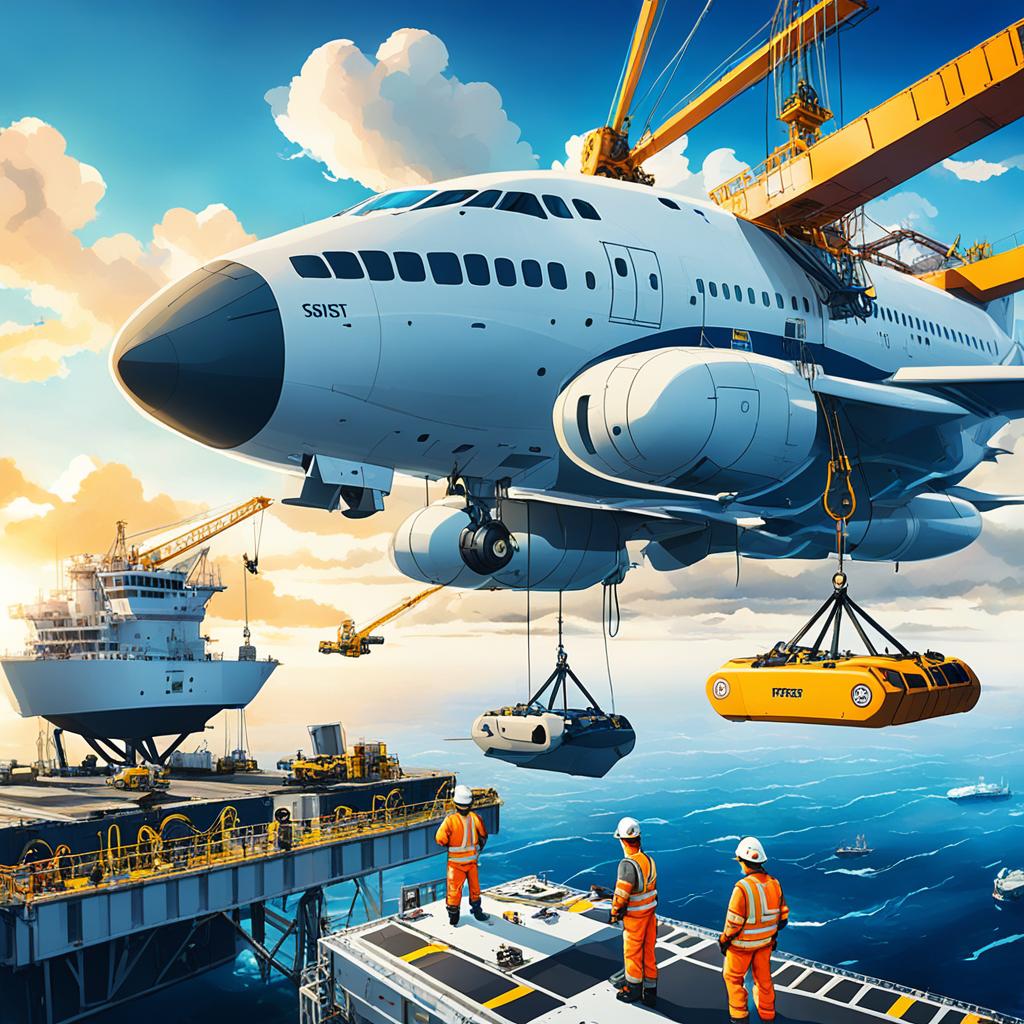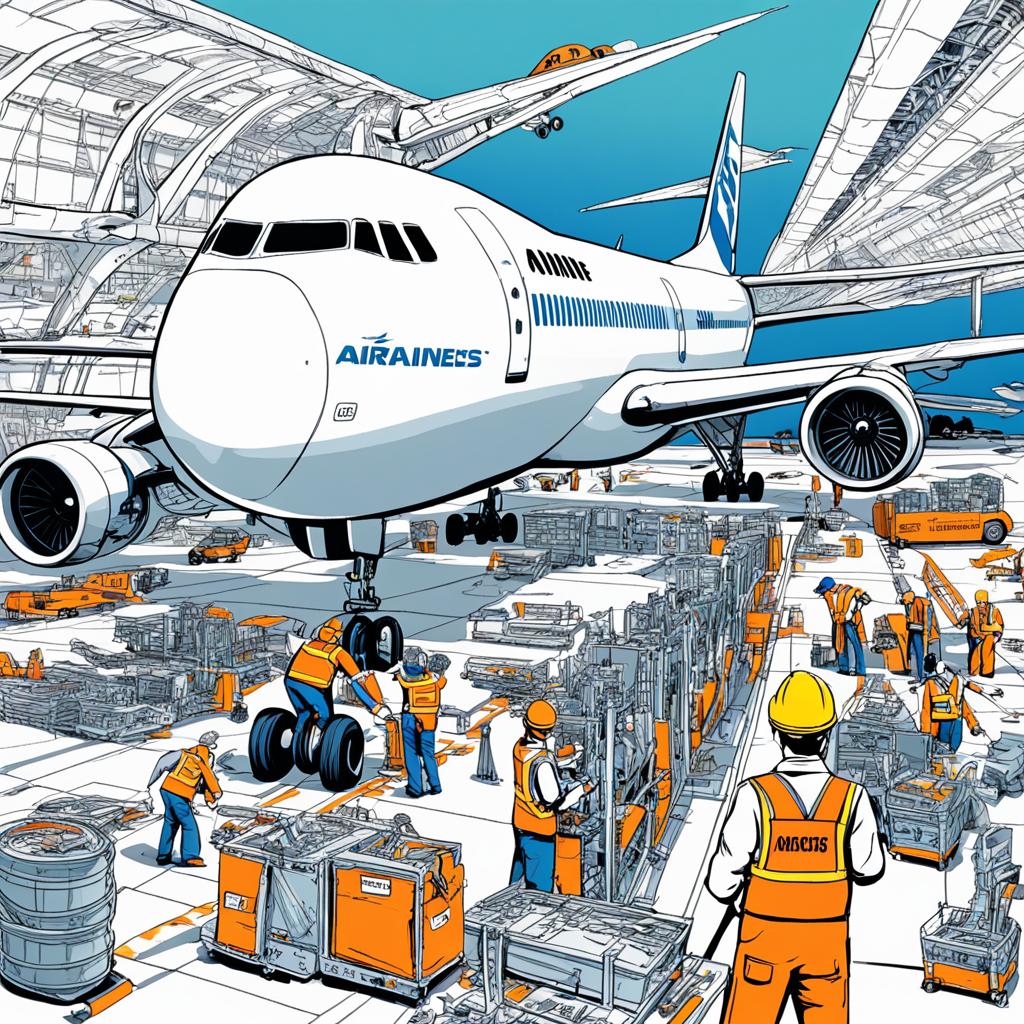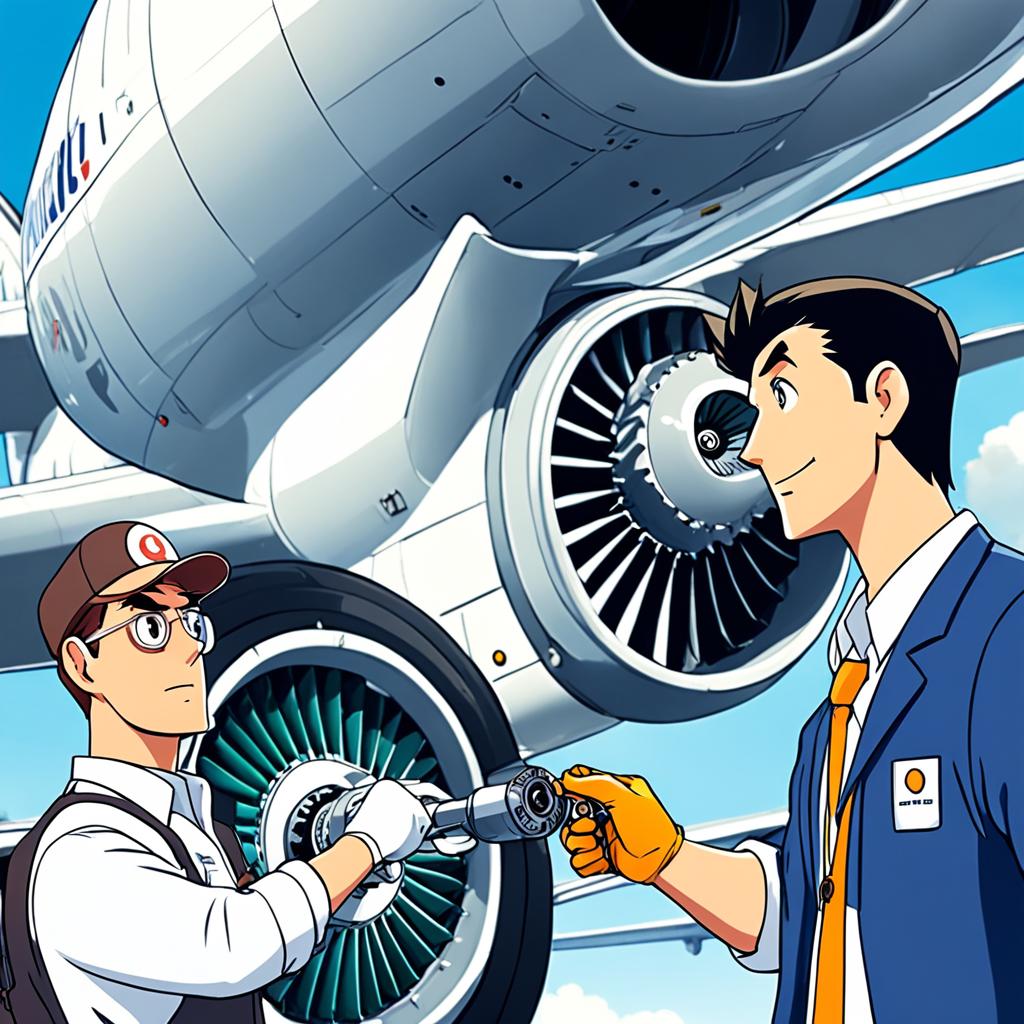Have you ever wondered how much of an airline’s maintenance work is outsourced? The answer might surprise you. According to a report by the Transport Workers Union (TWU), the percentage of heavy aircraft maintenance performed offshore has increased significantly in recent years. But what does this outsourcing mean for American jobs and safety standards?
Outsourcing has become a common practice among airlines, with billions of dollars being spent on maintenance work in South America, China, and Europe. While this may seem like a cost-effective solution for airlines, it raises concerns about the impact on the job market for American mechanics. Moreover, foreign repair stations often have lower standards for worker qualifications and licensing, which begs the question: Does outsourcing compromise the safety of the aircraft we fly?
In this article, we will explore which airlines outsource maintenance and examine the growth of offshore heavy maintenance and employment at foreign stations. We will also delve into the lack of federal tracking and oversight, ranking the airlines based on their outsourcing percentages. Finally, we will look at the responses from airlines and the industry perspective, as well as the impact of the pandemic on the outsourcing trend and the future outlook.
By understanding the extent of outsourcing in the airline industry and its potential consequences, we can reevaluate our own beliefs and perspectives on the matter. So, let’s uncover the truth behind airline maintenance outsourcing and its implications for jobs and safety.
Growth of Offshore Heavy Maintenance and Employment at Foreign Stations

The Transport Workers Union (TWU) report reveals an alarming trend in the growth of offshore heavy maintenance and employment at foreign stations in recent years. This trend is driven by the increase in the number of foreign repair stations that handle maintenance work for U.S. aircraft. According to the report, there has been a significant 24% growth in offshore heavy maintenance, signifying a shift in the industry’s approach to maintenance operations.
Between 2007 and 2015, the number of foreign repair stations experienced a notable increase of 2.6%. Furthermore, from 2012 to 2017, the employment at foreign stations grew by a staggering 21%. These statistics reflect both the expansion of offshore maintenance facilities and the employment opportunities they offer.
However, this growth in offshore heavy maintenance and employment at foreign stations raises concerns about the potential impact on American jobs. As more maintenance work is outsourced, domestic mechanics may face a diminishing demand for their expertise. This shift can ultimately result in job losses and economic implications for the American workforce.
To further illustrate the growth and implications of offshore heavy maintenance and employment at foreign stations, let’s take a closer look at the following table:
| Airline | Outsourcing Percentage |
|---|---|
| Southwest | 52% |
| United | 51% |
| Alaska | 49% |
| Delta | 43% |
| American | 33% |
The table above highlights the outsourcing percentages of maintenance work for some of the major U.S. airlines. These figures provide insights into the varying degrees of reliance on offshore heavy maintenance across different airlines. It’s essential to consider these percentages when examining the impact of outsourcing on American jobs and the overall industry dynamics.
Lack of Federal Tracking and Oversight
![]()
The TWU report sheds light on the concerning lack of federal tracking and oversight when it comes to offshore maintenance. The Federal Aviation Administration (FAA) has not updated its estimates of offshore maintenance to foreign stations in recent years, leaving a significant gap in our understanding of this issue. Furthermore, the FAA has failed to track jobs at offshore maintenance shops for over a decade, creating a lack of transparency and accountability in the industry.
This absence of federal tracking and oversight raises several important questions. How can we accurately assess the impact and scale of offshore maintenance if there is no comprehensive data? Without proper monitoring, it’s difficult to determine the safety standards, qualifications, and licensing requirements of workers in foreign repair stations. Without this crucial information, we are left in the dark about the potential risks associated with offshore maintenance.
It is essential for the FAA to take immediate action and implement robust tracking and oversight measures to address this oversight gap. By collecting accurate data on offshore maintenance, the FAA can provide valuable insights into the practices and trends within the industry. This information will help policymakers, regulators, and industry stakeholders make informed decisions to ensure the safety and integrity of the aviation maintenance sector.
| Challenges | Implications |
|---|---|
| Lack of accountability | Risks to worker qualifications and licensing standards |
| Uncertainty regarding safety standards | Potential compromises to aircraft maintenance quality |
| Lack of transparency | Inability to accurately assess the scale of offshore maintenance |
The table above highlights some of the challenges and implications of the current lack of federal tracking and oversight. These issues underscore the importance of implementing comprehensive monitoring systems to ensure the safety, quality, and integrity of offshore maintenance practices.
Airlines’ Outsourcing Percentage and Ranking
The Transport Workers Union (TWU) report sheds light on the outsourcing practices of various major U.S. airlines in terms of maintenance jobs. Below is a breakdown of the outsourcing percentages and rankings among the five largest carriers:
| Airline | Outsourcing Percentage |
|---|---|
| Southwest | 52% |
| United | 51% |
| Alaska | 49% |
| Delta | 43% |
| American | 33% |
On the lower end of the spectrum, Spirit outsources 24% of its maintenance, while Allegiant outsources 28%. When it comes to the highest percentages of outsourcing, Hawaiian takes the lead with a staggering 75%, followed closely by JetBlue at 74%.
This ranking offers a comprehensive overview of the outsourcing practices adopted by major U.S. airlines. It highlights the varying degrees to which these carriers choose to outsource their maintenance tasks.
Airlines’ Response and Industry Perspective

Airlines have taken varied stances in response to the outsourcing of maintenance. American Airlines, for instance, emphasizes that the majority of their aircraft work is carried out domestically by their own skilled mechanics. They rely on contract work only for a small portion of their maintenance needs. This approach enables American Airlines to maintain control over the quality and safety of their operations, ensuring the highest standards are met.
As the principal trade group for U.S. airlines, Airlines for America offers a broader industry perspective. They highlight the worldwide safety record of the aviation industry and stress the availability of high-quality maintenance services globally. By leveraging these resources, U.S. airlines can ensure the reliability and efficiency of their operations while complying with stringent safety standards.
Moreover, the airline industry consistently contributes to job creation. Airlines are hiring workers at record rates, addressing the demand for skilled professionals in the industry. Additionally, the Maintenance Repair & Overhaul (MRO) shops in the U.S. serve as valuable drivers of job opportunities, supporting both the local economy and the aviation workforce.
| Airline | Percentage of Maintenance Outsourced |
|---|---|
| American Airlines | Small amount of contract work |
| Airlines for America | High-quality maintenance services globally |
| Aviation Industry | Record rates of hiring |
| MRO Shops | Job opportunities and support for the economy |
Impact of Pandemic and Future Outlook
The COVID-19 pandemic has had a significant impact on the aviation industry, forcing airlines to make tough decisions to survive the financial crisis. As airlines face cash constraints, they have implemented emergency measures, including cost-cutting measures in aircraft maintenance.
However, the long-term implications for outsourcing trends in the maintenance, repair, and overhaul (MRO) sector remain uncertain. While the immediate focus has been on reducing costs, the future outlook may see shifts in airlines’ approach to maintenance outsourcing.
Some experts predict that as airlines recover from the pandemic, they may increase their outsourcing of MRO services as a means to reduce costs or preserve cash. This trend is expected to be led by low-cost carriers, which have historically embraced outsourcing as a way to keep operational costs low.
On the other hand, full-service carriers may adopt a more balanced approach, striving for an equilibrium between in-house and outsourced maintenance. This strategy allows them to maintain a level of control over critical maintenance operations while also benefiting from the flexibility and cost advantages of outsourcing.
The future outlook for maintenance outsourcing depends on a range of factors, including fleet plans, the projected increase in demand for MRO services, and the availability of adequate in-house capacity. Airlines will need to carefully evaluate their options and strike a balance between minimizing costs and ensuring the highest standards of maintenance quality and safety.
| Airlines | Outsourcing Percentage |
|---|---|
| Southwest | 52% |
| United | 51% |
| Alaska | 49% |
| Delta | 43% |
| American | 33% |
| Spirit | 24% |
| Allegiant | 28% |
| Hawaiian | 75% |
| JetBlue | 74% |
Rethinking Maintenance Outsourcing and Building In-House Capability
In recent years, many airlines have opted to outsource their maintenance needs. However, the current shortage of capacity and labor in the Maintenance, Repair, and Overhaul (MRO) sector, along with rising costs and increased control by aircraft and engine manufacturers, has prompted some airlines to reconsider this approach. Instead, they are now actively investing in building in-house maintenance capability.
This strategic shift is driven by the desire to ensure the availability of sufficient maintenance capacity and to have greater control over costs and supplier options. By bringing maintenance functions in-house, airlines can better manage their operations, reduce reliance on third-party providers, and avoid potential supply chain disruptions.
Furthermore, building in-house capability presents significant opportunities for airlines. Some see it as a new revenue source, offering services to other carriers and generating additional income. Moreover, by expanding their internal maintenance resources, airlines can enhance their flexibility and responsiveness to maintenance needs, ultimately improving customer satisfaction.
While maintenance outsourcing has been a prevalent trend, the current market conditions and industry dynamics are influencing airlines to develop in-house maintenance capability. This strategic focus enables them to navigate the challenges in the MRO market and capitalize on the evolving landscape.
FAQ
Q: Which airlines outsource maintenance?
A: Southwest outsources 52% of its maintenance, United outsources 51%, Alaska outsources 49%, Delta outsources 43%, and American outsources 33%. At the low end, Spirit outsources 24% and Allegiant outsources 28%. Hawaiian and JetBlue have the highest percentages of outsourcing, with Hawaiian outsourcing 75% and JetBlue outsourcing 74%.
Q: What is the growth of offshore heavy maintenance and employment at foreign stations?
A: The percentage of heavy aircraft maintenance performed offshore has increased from 7% in 2003 to approximately 24% in recent years. Between 2007 and 2015, there was a 2.6% increase in the number of foreign repair stations. Additionally, between 2012 and 2017, the employment at foreign stations grew by 21%.
Q: What is the lack of federal tracking and oversight in offshore maintenance?
A: The Federal Aviation Administration (FAA) has not updated its estimates of offshore maintenance to foreign stations in recent years. Furthermore, the FAA has not tracked jobs at offshore maintenance shops for over a decade. This lack of monitoring raises concerns about the accuracy of current statistics and the level of control exercised over offshore maintenance activities.
Q: What is the percentage and ranking of maintenance outsourcing among airlines?
A: The five largest carriers have the following outsourcing percentages: Southwest 52%, United 51%, Alaska 49%, Delta 43%, and American 33%. Spirit and Allegiant have lower outsourcing percentages at 24% and 28% respectively. Hawaiian and JetBlue have the highest percentages of outsourcing, with Hawaiian outsourcing 75% and JetBlue outsourcing 74%.
Q: How do airlines respond to the issue of outsourcing maintenance?
A: American Airlines states that a large majority of their aircraft work is done domestically by their own mechanics, with only a small amount of contract work provided. Airlines for America, the principal trade group for U.S. airlines, highlights the industry’s worldwide safety record and the availability of high-quality aircraft maintenance globally. The industry is also hiring workers at record rates, and the airline industry drives additional jobs through Maintenance Repair & Overhaul (MRO) shops in the U.S.
Q: What is the impact of the pandemic and the future outlook for maintenance outsourcing?
A: The pandemic has caused cash-strapped airlines to implement emergency measures, including in aircraft maintenance. However, the long-term impact on outsourcing trends remains uncertain. Some experts predict that airlines may outsource more MRO services as they recover and seek to reduce costs or preserve cash. Low-cost carriers are expected to lead the outsourcing trend, while full-service carriers may aim to strike a balance between in-house and outsourced maintenance. The future outlook depends on factors such as fleet plans, increased demand for MRO services, and the availability of adequate in-house capacity.
Q: Why are airlines rethinking maintenance outsourcing and investing in building in-house capability?
A: The shortage of capacity and labor in the MRO sector, coupled with rising prices and increasing control by aircraft and engine manufacturers, is causing some airlines to rethink outsourcing and invest in building in-house maintenance capability. This strategic shift is driven by a desire to ensure the availability of adequate maintenance capacity and to have more control over costs and supplier options. Some airlines see the potential for expanding maintenance as a new revenue source, while others view it as a necessary step to ensure supply and avoid overreliance on third-party providers and OEMs. By building in-house capability, airlines can navigate the challenges and seize opportunities in the evolving MRO market.
